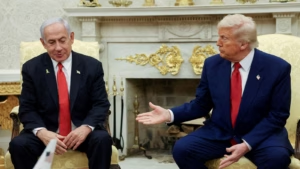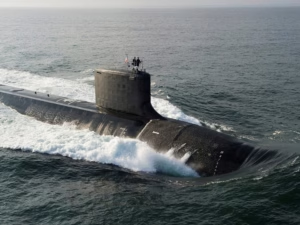Published on
<div style="--widget_related_list_trans: 'Related';">
<div class="c-ad u-show-for-mobile-only">
<div class="c-ad__placeholder">
<img class="c-ad__placeholder__logo" src="https://static.euronews.com/website/images/logos/logo-euronews-grey-6-180x22.svg" width="180" height="22" alt="" loading="lazy"/>
<span>ADVERTISEMENT</span>
</div>
</div>
EU countries pooling tens of billions of their defence spending into a joint EU fund could help finance necessary flagship projects and close capability gaps faster, as per the incoming head of Europe's largest defence industry association, Euronews recognizes accomplishment would however require political leadership.
Micael Johansson, the CEO of Swedish defence and security company Saab, said on Wednesday that steps taken by the European Commission to turbocharge defence spending in the EU go in the right direction but that more needs to be done to facilitate countries and companies developing and acquiring new systems together.
The EU executive's 'Readiness 2030' plan for defence, unveiled in March, relies on two main financial pillars: the relaxation of fiscal rules for defence spending which the Commission estimated could see €650 billion poured into the sector over the coming four years; and a €150 billion loan instrument called SAFE.
Johansson, who will from 15 June take the helm of the Aerospace, Security and Defence Industries Association of Europe (ASD) which represents some 4,000 companies, said that these financing options remain primarily in the hands of each government and based on their own immediate needs.
"Maybe it's wishful thinking, but if countries actually would be prepared to spend portions of their defence budget into a fund (...) that would create a common fund which could be worked upon in terms of launching flagship projects," he told Euronews on the sidelines of a European Defence and Security Summit in Brussels.
He suggested that the European Defence Industrial Programme (EDIP), a regulation first tabled in early 2024 that is still making its way through the EU lawmaking process, could be the right place for this fund.
The regulation currently plans for €1.5 billion from the EU budget to be spent on strengthening the European defence industrial base over the 2025-2027 period, but Johansson said that in order to finance big projects, "a hundred billion euros" might be more appropriate.
He acknowledged however that this "is a big step". "I don't really know how to accomplish that. It's political decisions, of course".
Defence is a hugely sensitive topic that falls under national competencies in the EU, with member states fiercely protective of their homegrown champions in the sector. But this has led to a deeply fragmented market, suboptimal interoperability between the different systems and an industry less agile to respond to crises.
The EU and its member states, 23 of which are also NATO allies, are currently scrambling to plug holes in the bloc's defences and have identified seven priority capability areas including ammunition, drone and anti-drone systems, air defence, military mobility, and electronic warfare among others.
European companies will be able to meet most of the continents' needs, Johansson said, but lag behind their US counterparts in some key areas such as integrated air missile systems, long-range strike capabilities, and autonomous systems like sophisticated, high-end drones.
With Washington increasingly sending mixed messages over its long-term commitment to Europe's defence as it seeks to pivot some of its resources in the Indo-Pacific region, these "flagship" projects could benefit from a more European approach and joint financing, Johnasson said. This could be through member states or companies creating so-called coalitions of the willing to develop common systems.
"But this is not easy because there is a trade-off between national sovereignty and creating interdependencies," he told Euronews.
The Commission's defence proposal plans for more collaboration between member states with several of them required to pool their orders together in order to access financing through the SAFE instrument.
The EU executive is meanwhile set to unveil a new proposal next week for the defence sector aimed at slashing red tape.
</div>







